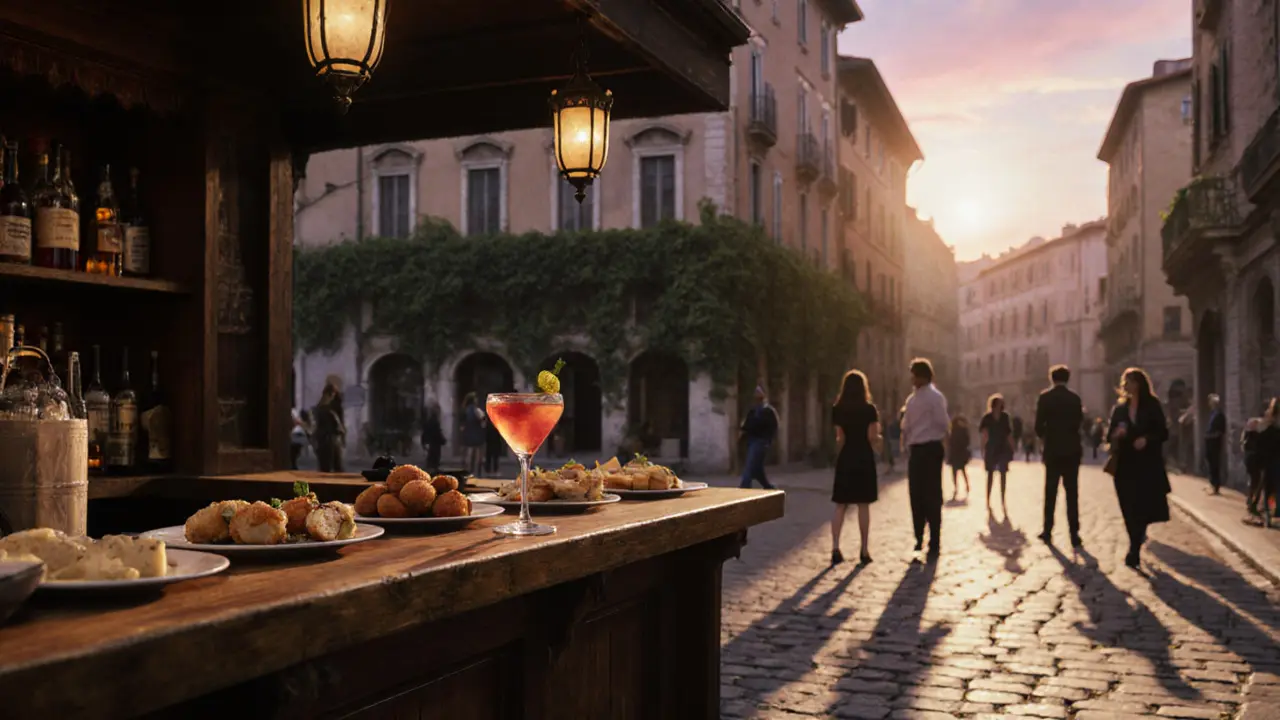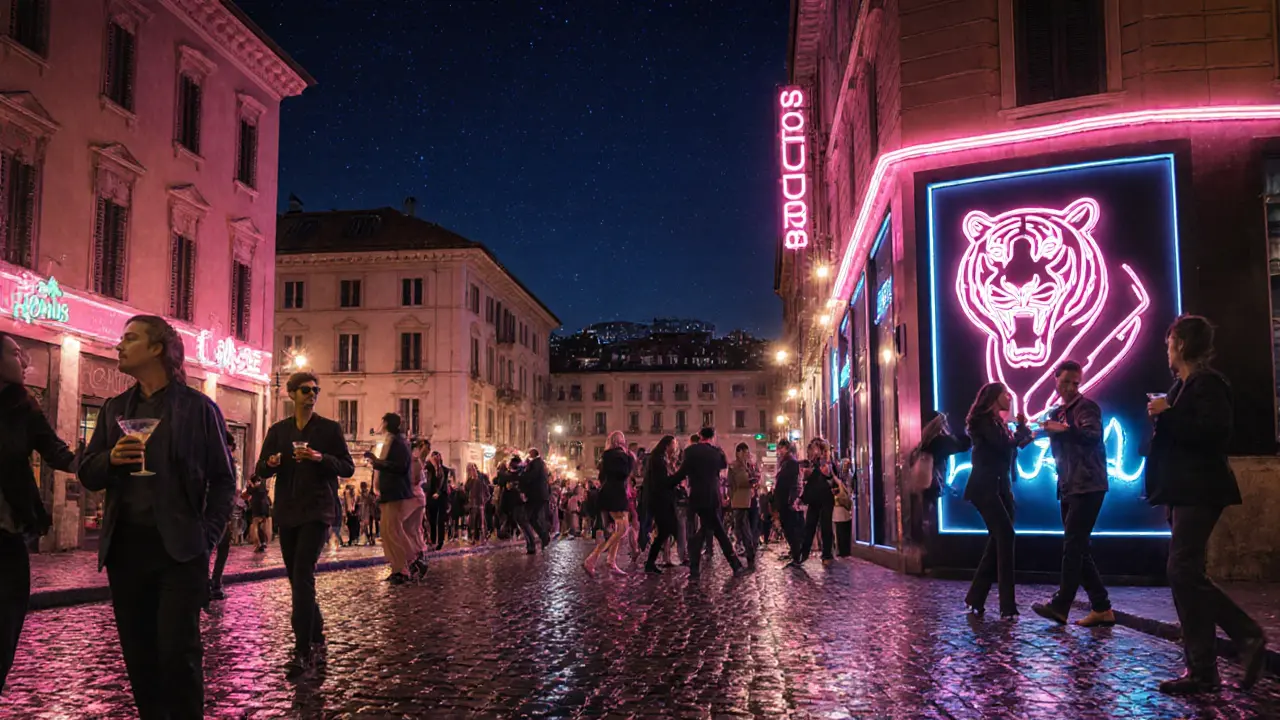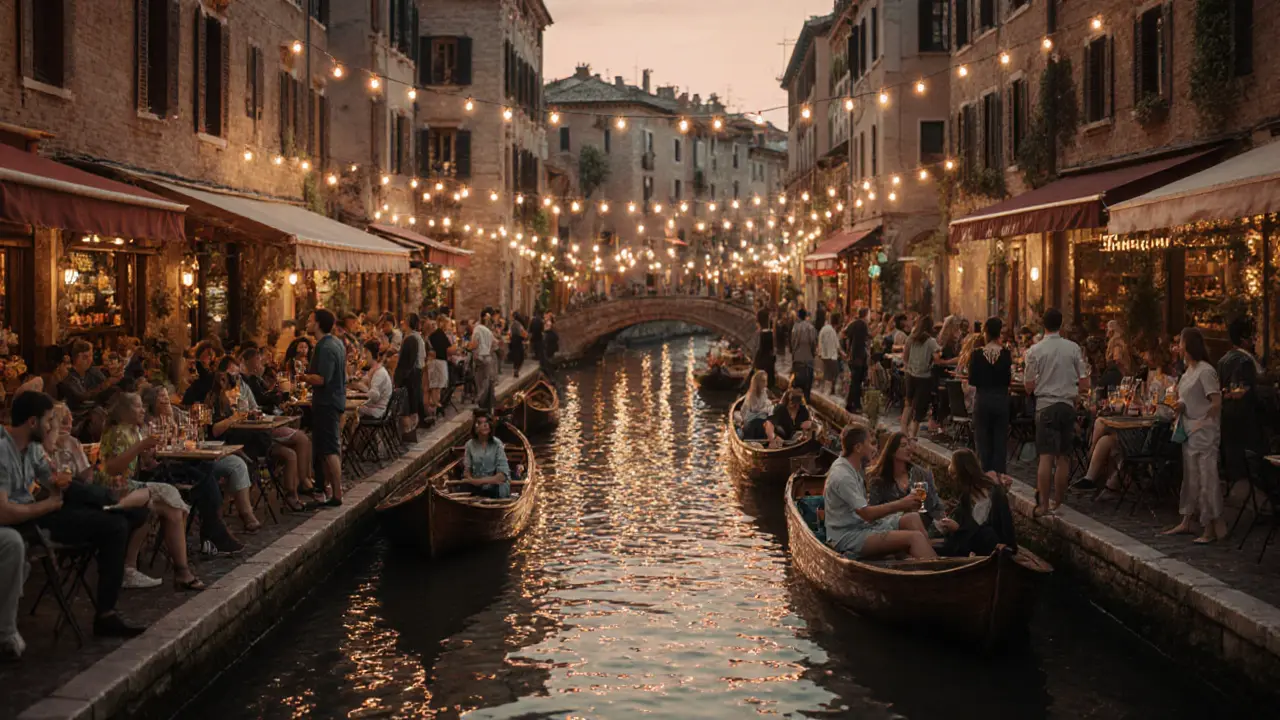Milan doesn’t sleep when the sun goes down. While many think of it as a city of fashion and finance, the real pulse of Milan beats louder after 10 p.m. You won’t find just clubs here-you’ll find rooftop lounges with skyline views, hidden wine bars tucked behind bookshelves, and street corners where locals sip aperitivo like it’s a daily ritual. This isn’t about partying for the sake of it. It’s about rhythm, style, and knowing where to look.
Start with the Aperitivo Tradition
If you want to understand Milanese nightlife, begin at sunset. The aperitivo isn’t just a drink-it’s an event. Between 6 p.m. and 9 p.m., bars across the city turn into buffet-style social hubs. For €12-€18, you get a cocktail or glass of wine and access to a spread of snacks: mini sandwiches, arancini, cheese platters, even pasta dishes. It’s not a gimmick. It’s how people unwind after work.
Head to Bar Basso in the Brera district. This is where the Negroni Sbagliato was invented in the 1970s. Order one. Watch the locals sip slowly, chat with neighbors, and linger long after their drinks are gone. Or try Terrazza Aperol near the Duomo. It’s pricier, but the view of the cathedral lit up at dusk is worth every euro.
Brera: Where Art Meets After-Hours
Brera feels like a secret only Milan knows. Narrow cobblestone streets, vintage bookshops, and murals on every wall. At night, it transforms. The area buzzes with a quiet energy-no bass thumping, no neon signs flashing. Just dim lighting, jazz playlists, and people who know how to talk.
Alchimia is a tiny cocktail bar tucked behind a red curtain. No menu. The bartender asks what you like, then crafts something unexpected-maybe a gin with lavender syrup and smoked salt. La Soffitta is a jazz club with no sign. Find it by the sound of a saxophone drifting from a basement. Seats are limited. Arrive early or be ready to stand.
Don’t miss Bar Basso again-yes, it’s worth a second visit. The same place that invented a classic cocktail now hosts live acoustic sets on Thursdays. It’s not loud. It’s not crowded. It’s exactly how Milan wants its nights to feel.
Navigli: Canals, Craft Beer, and Late Nights
On the other side of town, the Navigli canals come alive. Once a working waterway, now it’s Milan’s most relaxed nightlife zone. Lined with outdoor terraces, street artists, and boats turned into floating bars, this is where students, artists, and expats gather.
Bar Berton is the king of Navigli. Open until 3 a.m., it serves over 50 craft beers on tap. Try the Amber Ale brewed just down the canal. Order a plate of panzerotti-fried dough stuffed with mozzarella and tomato. Eat it while watching the moon reflect off the water.
For something different, head to La Baita. It’s a converted warehouse with mismatched couches, vinyl records spinning, and a kitchen that serves gourmet burgers until 4 a.m. The crowd? Musicians, designers, and travelers who don’t care about labels.
Porta Venezia: Underground Vibes and Queer-Friendly Spaces
Porta Venezia is Milan’s most colorful neighborhood. It’s where the city’s LGBTQ+ community thrives, where experimental music spills out of basements, and where you’ll find some of the most authentic underground scenes.
Le Bains Douches is a club that doesn’t look like a club. No bouncers. No dress code. Just a red door, a small sign, and a line of people who know what’s inside. The music changes nightly-house, techno, disco, or live electronic sets. The crowd? Mixed, loud, and welcoming.
Bar Piuma is a cozy, candlelit spot with cocktails named after Italian poets. It’s quiet during the week, but on Fridays, it turns into a drag show venue. No tickets needed. Just show up. The performances are raw, funny, and deeply personal.
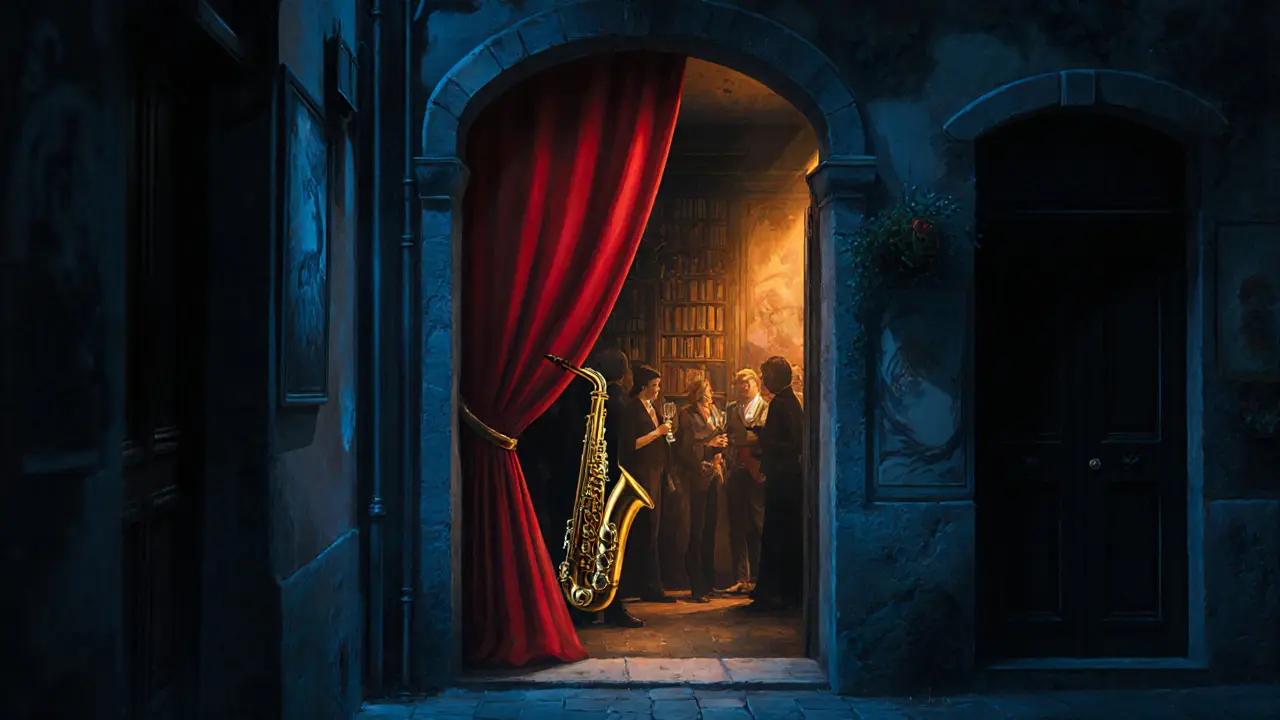
Corso Como: Glamour, Design, and the Elite Crowd
If you want to see Milan’s high-end nightlife, head to Corso Como. This isn’t for budget travelers. It’s for those who appreciate design, exclusivity, and a certain kind of quiet luxury.
Corso Como 10 is a lifestyle space that doubles as a bar and restaurant. Inside, you’ll find minimalist furniture, curated art, and a crowd that looks like they stepped out of a Vogue editorial. The drinks are expensive-€20 for a gin and tonic-but the atmosphere is unmatched. Come here for the vibe, not the price tag.
Adjacent is La Scala’s after-party spot, Il Baretto. It’s not open to the public on opera nights unless you have a ticket. But on other nights, it’s a hidden gem for wine lovers. The sommelier knows every bottle in the cellar. Ask for the Barolo from 2015. He’ll pour you a taste.
Where to Avoid
Not every place labeled as "nightlife" in Milan is worth your time. Stay away from the tourist traps near the Duomo after 11 p.m. These spots charge €30 for a watered-down cocktail and play Top 40 hits on loop. You’ll pay more, drink less, and feel like a prop in someone else’s Instagram post.
Also skip the clubs that advertise "VIP tables" with no real reason to exist. If a club requires you to book a table to get in, it’s probably more about profit than music. Milan’s best nights happen when you wander, not when you reserve.
What to Wear
Milan doesn’t have a strict dress code, but it has standards. You won’t get in anywhere wearing flip-flops and a hoodie. That doesn’t mean suits and heels. It means clean, simple, intentional. Dark jeans. A tailored jacket. Leather shoes. A well-fitted dress. Think "effortlessly polished." Locals notice details. They don’t care about logos. They care about fit.
At Brera or Navigli, you can get away with sneakers. At Corso Como or Le Bains Douches, you’ll stand out if you’re too casual. When in doubt, dress like you’re going to a gallery opening-not a concert.
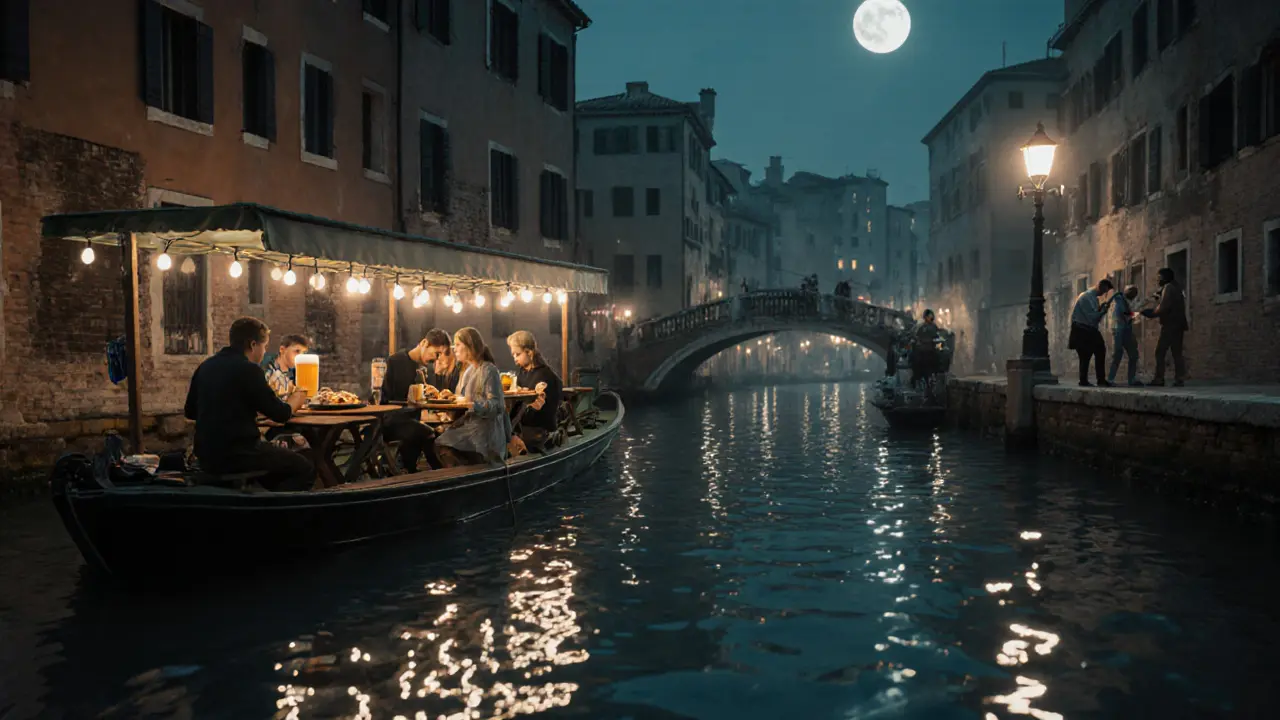
Getting Around
Milan’s metro shuts down at 1:30 a.m. After that, you’ll need taxis or rideshares. Uber works, but local apps like FreeNow and ItTaxi are cheaper and more reliable. A ride from Navigli to Brera costs about €8-€12.
Walking is fine between Brera and Porta Venezia-it’s only 15 minutes. But don’t try to walk from Navigli to the city center after midnight. The streets get quiet, and the lighting fades. Stick to well-lit paths or take a cab.
When to Go
Weekends are packed, especially Friday and Saturday. If you want a real local experience, go midweek. Wednesday nights in Brera are quieter, but the music is better. Thursday at Bar Basso has live jazz. Sunday nights in Navigli are chill-perfect for a slow drink under the stars.
Summer (June-August) means outdoor terraces everywhere. Winter (December-February) turns bars into cozy dens with heaters and blankets. There’s no bad time-just different vibes.
Final Tip: Don’t Rush It
Milan’s nightlife isn’t about hitting five clubs in one night. It’s about savoring one great moment. Sit at a bar for two hours. Talk to the bartender. Ask where they go on their days off. Let someone guide you to a place you didn’t know existed.
The best night in Milan doesn’t start with a reservation. It starts with a question: "Where do you like to go after work?"
Is Milan nightlife safe at night?
Yes, Milan is generally safe at night, especially in popular nightlife areas like Brera, Navigli, and Porta Venezia. Stick to well-lit streets, avoid isolated alleys after midnight, and keep an eye on your belongings. Pickpocketing is rare but can happen in crowded bars. Most locals and expats walk home alone without issue.
What’s the legal drinking age in Milan?
The legal drinking age in Italy is 18. You’ll be asked for ID at most bars and clubs, even if you look older. Bring your passport or EU ID card. Some places, especially upscale ones, may refuse entry if you don’t have proper identification.
Do I need to book a table in Milan nightclubs?
Only at a few high-end spots like Corso Como 10 or exclusive private clubs. Most bars and underground venues don’t require reservations. In fact, if a place pushes table bookings hard, it’s often a sign it’s more focused on profit than experience. Walk in, order a drink, and see how the night unfolds.
Are there any free nightlife events in Milan?
Yes. Many bars in Navigli and Brera host free live music nights on Wednesdays and Thursdays. Check out Bar Berton’s calendar for acoustic sets. Some galleries in Porta Venezia open late on Fridays with free wine and art. The city’s official tourism site, Visit Milano, lists weekly free events-no ticket needed.
Can I find English-speaking staff in Milan bars?
In tourist-heavy areas like Brera and near the Duomo, yes. But in local favorites like La Soffitta or Le Bains Douches, staff may speak limited English. That’s part of the charm. Learn a few Italian phrases-"Un aperitivo, per favore," "Quanto costa?"-and you’ll get better service and deeper conversations. Italians appreciate the effort.
What time do places close in Milan?
Bars close around 2 a.m., but many stay open later if they serve food. Clubs like Le Bains Douches and La Baita stay open until 4 a.m. or later on weekends. The metro stops at 1:30 a.m., so plan your ride home. Some places offer free shuttle services on weekends-ask when you arrive.
